For decades, Honda has earned a reputation as one of the most reliable automakers in the world. Known for engineering excellence, practical design, and vehicles that routinely last well over 200,000 miles, Honda has built a legacy on trust.
From the frugal Civic to the family-hauling Odyssey, countless Honda models have become staples on roads around the globe, offering consumers peace of mind and strong resale value. Whether you’re a first-time buyer or a seasoned car enthusiast, the phrase “buy a used Honda” has almost always carried with it a sense of assurance—until, that is, you dig a little deeper.
While the brand remains generally dependable, not every Honda is created equal. Some models, particularly those introduced during transitional years or packed with new, unrefined technology, have failed to live up to Honda’s long-standing promise of durability and low maintenance.
These problem vehicles still carry the Honda badge, but owners have encountered a range of issues: from premature transmission failure and electrical system faults to oil dilution and structural corrosion. As such, not all used Hondas are slam-dunk purchases, and buyers would do well to educate themselves before taking the plunge.
This article takes a balanced look at the Honda lineup by exploring both sides of the ownership experience. On one hand, we highlight five Honda models that have stood the test of time, proving themselves to be smart used car buys in 2025. These vehicles remain dependable well beyond the 100,000-mile mark, offer affordable maintenance, and hold their value remarkably well. They exemplify what the Honda brand was built on: consistency, reliability, and longevity.
On the other hand, we also shine a spotlight on five Honda models that haven’t aged as gracefully. Whether due to design flaws, manufacturing issues, or the growing pains of new technologies, these vehicles have developed reputations for being problematic as they age. This list isn’t intended to bash the brand, but rather to provide a clear-eyed view of specific models and years that should raise caution flags for anyone shopping the used car market.
In today’s economy, buying a used vehicle is often the smarter financial decision, but it also comes with higher risks if you’re not careful. The goal here is to provide an honest, thorough overview that empowers buyers with the knowledge they need to make informed decisions. Honda, despite its reputation, has produced a few duds among its many hits, and understanding the difference could save you thousands in repairs, not to mention the headache of owning an unreliable vehicle.
So whether you’re looking to grab a dependable used Civic for your commute or thinking about a family-friendly CR-V, this guide will help you separate the keepers from the clunkers. Let’s take a deep dive into the best and worst used Hondas you can buy in 2025.
Also Read: 5 Cars With Fake Reliability Ratings and 5 That Deserve the Hype
Table of Contents
Toggle5 Hondas That Are Still Worth Buying Used

1. 2012–2015 Honda Civic
The Honda Civic has long been the gold standard in the compact sedan and coupe segment, and the 2012–2015 models embody why it’s one of the best used vehicles you can buy. These Civics benefited from Honda’s continual refinement of the platform, offering a balance of performance, reliability, and comfort that few competitors could match.
While the 2012 model faced some criticism for its cheaper interior materials compared to its predecessor, Honda quickly addressed this in the 2013 refresh, vastly improving cabin quality and technological integration. Regardless of trim, these Civics are powered by the tried-and-true 1.8-liter i-VTEC engine, which is not only fuel-efficient but also bulletproof in terms of long-term durability.
Owners of these Civics regularly report pushing their mileage beyond the 200,000-mile mark with minimal major repairs, especially when basic maintenance schedules are followed. The car’s transmission—either the five-speed automatic or the five-speed manual—remains dependable over time, with no widespread reports of failure.
Suspension and steering components are also designed for longevity, which means fewer surprise repair bills. For those interested in a sportier feel, the Si trims from this generation offer more power without compromising much in terms of reliability, making them attractive to enthusiasts and commuters alike.
Beyond the mechanics, the Civic’s real-world value proposition shines through in its excellent fuel economy (up to 39 MPG highway), easy-to-find replacement parts, and strong resale value. Safety ratings are commendable as well, with top scores in crash testing.
Even older Civics from this range often come equipped with Bluetooth connectivity, rearview cameras, and decent infotainment options, meaning you won’t feel like you’re stepping back in time just because you’re buying used. Whether you’re a student, a daily commuter, or someone just looking for dependable wheels, this generation of Civic delivers everything you need with little drama.
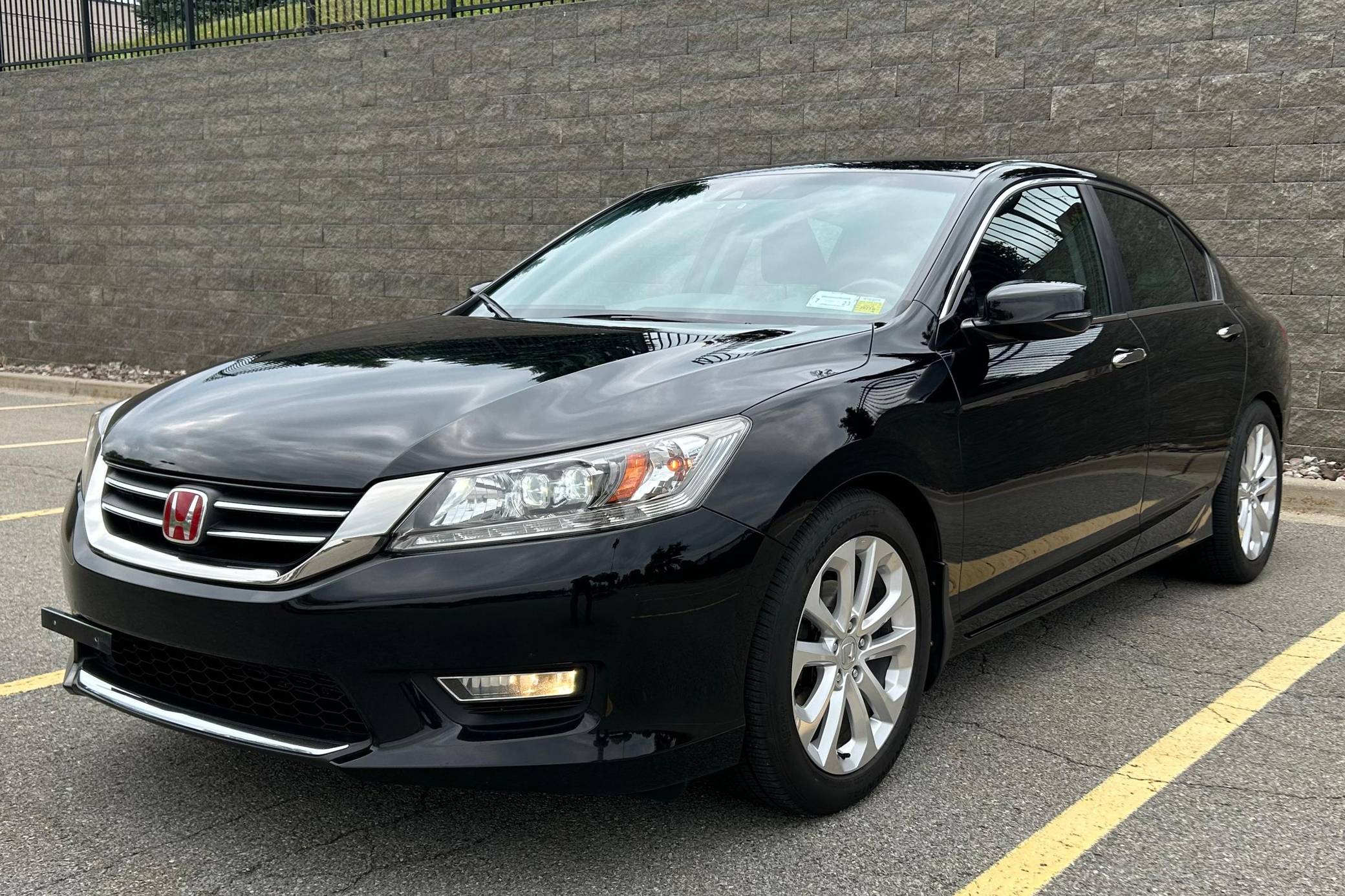
2. 2013–2017 Honda Accord
The 2013–2017 Honda Accord represents one of the best values in the used midsize sedan market, blending comfort, refinement, and bulletproof reliability. This generation marked a significant evolution in the Accord’s design language, introducing a sleeker exterior and a higher-quality, more tech-laden interior. More importantly, the engineering under the hood continued to live up to Honda’s high standards.
The base 2.4-liter inline-4 engine is one of the most robust naturally aspirated engines in the segment, offering smooth acceleration, minimal long-term wear issues, and excellent fuel economy. Meanwhile, the available 3.5-liter V6 provides a powerful yet reliable alternative, with many V6 models lasting well beyond 200,000 miles.
Transmission options are also a strength of this generation. Whether you go with the smooth-shifting six-speed manual (offered on select trims), the CVT, or the six-speed automatic paired with the V6, each has a solid reputation for longevity when properly maintained.
Cabin comfort is another hallmark: from high-quality seats to soft-touch materials and logical control layouts, the interior feels more like a premium offering than an economy car. Even older trims often come with dual-zone climate control, touchscreen infotainment, and advanced safety features like lane departure warning and forward collision alert, depending on the model year.
Additionally, this Accord generation delivers a driving experience that remains engaging without sacrificing comfort. Handling is composed, steering is responsive, and the ride is quiet, even after several years on the road. The Accord is also among the most fuel-efficient non-hybrid midsize sedans of its time, and it holds its value extremely well.
Few used cars offer this level of refinement and reliability in the $10,000–$15,000 price range. For families, solo commuters, or even car enthusiasts seeking a reliable daily driver, the 2013–2017 Accord is still a smart investment.
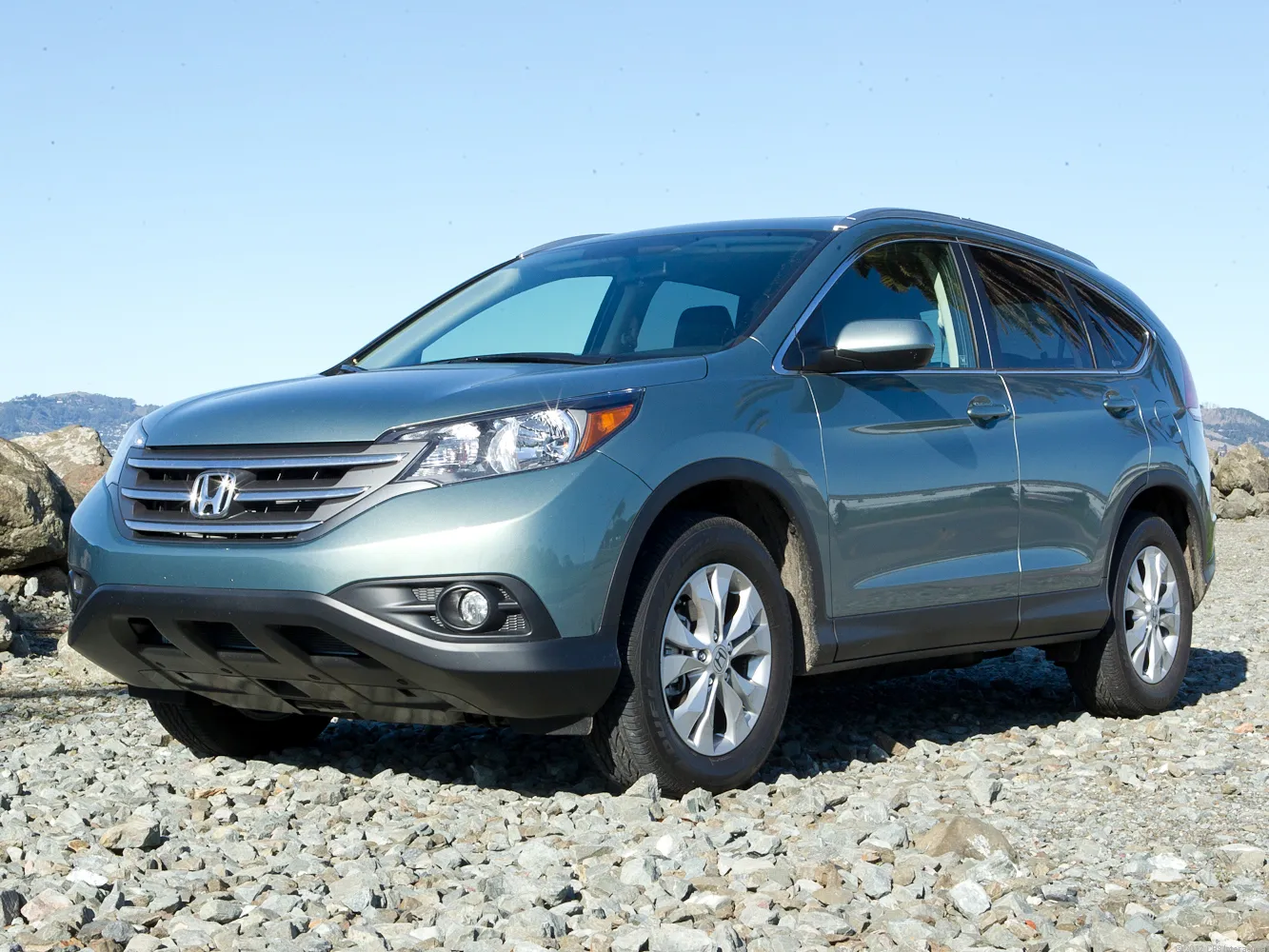
3. 2012–2015 Honda CR-V
In the crowded compact SUV segment, the 2012–2015 Honda CR-V stands out as one of the most dependable and cost-effective choices you can make on the used market. Honda’s reputation for mechanical reliability is exemplified in this generation of the CR-V.
Equipped with a 2.4-liter four-cylinder engine and a five-speed automatic transmission, the powertrain is simple, proven, and efficient. It’s not designed to be flashy, but it’s incredibly dependable and capable of powering the CR-V well past the 200,000-mile mark. This generation also saw an improvement in suspension comfort and road manners, with better ride quality than its predecessor and greater refinement in handling.
What makes this CR-V generation especially attractive to used buyers is its practical nature. The cargo area is large for its class, with a flat load floor and rear seats that fold down easily to accommodate larger items. Honda’s interior ergonomics are on full display here, with intuitive controls, plenty of cup holders, and family-friendly touches like wide-opening rear doors and generous rear legroom.
The 2015 facelift brought even more to the table—adding Honda Sensing safety features on higher trims, improved infotainment systems, and revised front-end styling that still looks modern today.
Reliability is where the CR-V shines the most. Owners consistently report minimal unscheduled maintenance beyond oil changes, tire rotations, and brake pad replacements. The 2012–2015 models also fare well in terms of fuel economy (up to 31 MPG highway), low operating costs, and resale value.
Unlike many competitors that introduce complexity for the sake of tech, the CR-V sticks to a reliable formula, making it ideal for buyers who want a long-lasting, low-hassle vehicle that handles everything from school runs to road trips with ease.
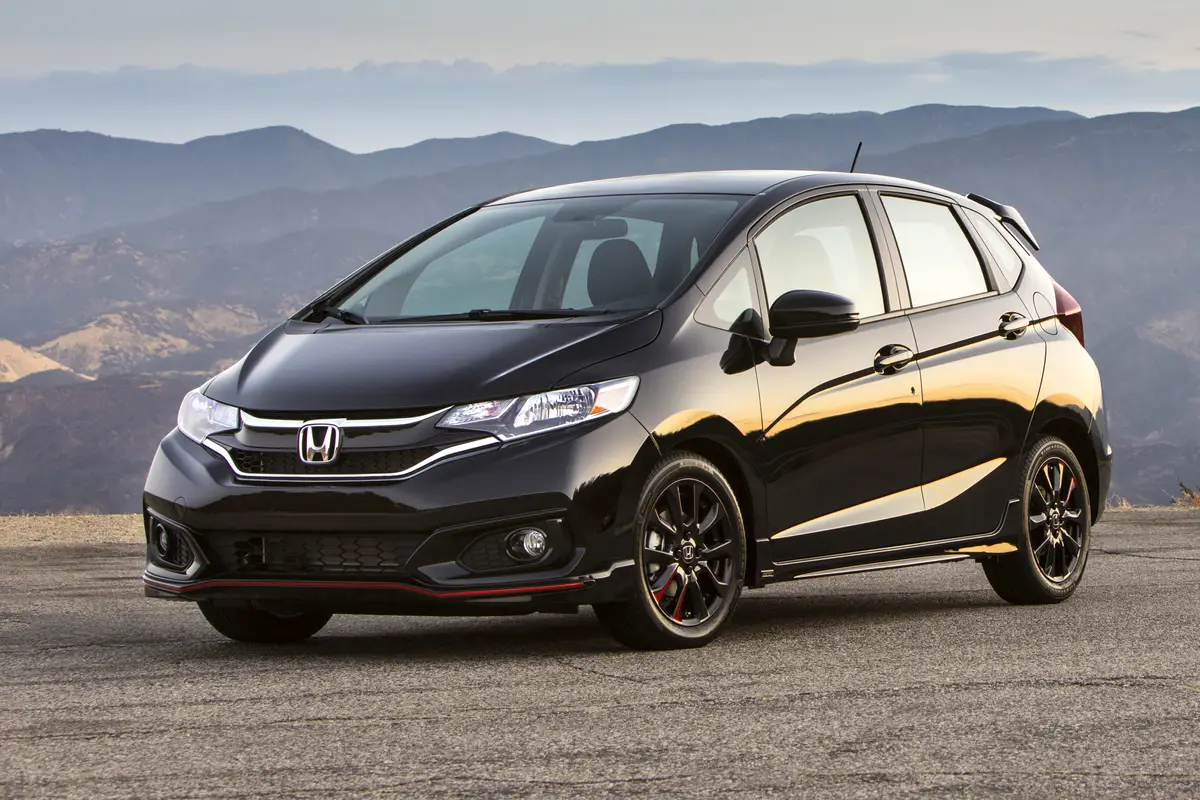
4. 2014–2017 Honda Fit
The Honda Fit may look like a humble subcompact hatchback, but it punches far above its weight in reliability, utility, and fun-to-drive dynamics. The 2014–2017 Fit models represent the second generation in the U.S. market and are some of the best-kept secrets in the used car world.
With its ingenious “Magic Seat” system, the Fit offers unmatched interior flexibility, allowing drivers to flip and fold seats in multiple ways to accommodate cargo of nearly any shape or size. It’s like having a mini moving van in a compact footprint. But it’s not just the clever interior that makes the Fit a standout—its mechanical components are also impressively durable.
The Fit is powered by a 1.5-liter four-cylinder engine paired with either a slick six-speed manual or a continuously variable transmission (CVT). The CVT in these models was redesigned to improve both drivability and longevity, and it has shown far fewer reliability issues than CVTs in other makes.
On the road, the Fit offers nimble handling and excellent visibility, making it a joy to drive in urban environments or tight parking lots. At the same time, it provides solid fuel economy—up to 36 MPG highway—without sacrificing acceleration or interior comfort.
For budget-conscious buyers who still want reliability and a bit of personality, the Fit checks all the boxes. It’s affordable to insure, inexpensive to maintain, and parts are widely available.
Moreover, the Fit’s reputation for reliability is echoed in numerous consumer reports and owner testimonials, which frequently highlight its dependability and ease of ownership. Whether you’re a city dweller, a student, or just someone looking for a second vehicle that won’t break down, the 2014–2017 Honda Fit delivers way more than it costs.
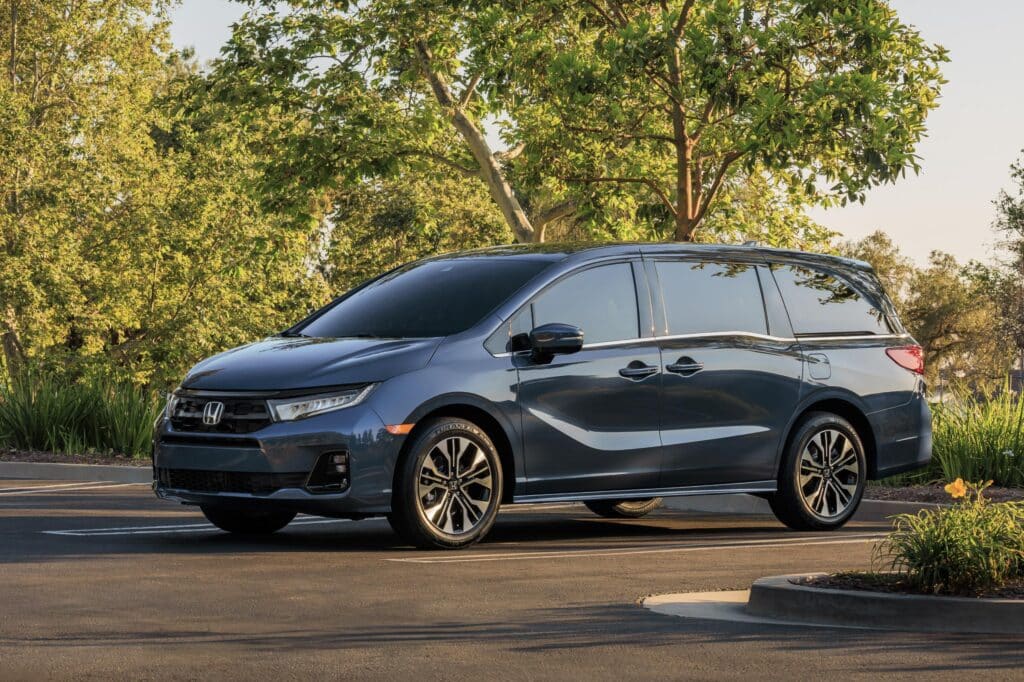
5. 2011–2014 Honda Odyssey
Minivans aren’t always glamorous, but when it comes to space, practicality, and long-term reliability, the 2011–2014 Honda Odyssey is an excellent used buy, especially for families. These models feature a strong 3.5-liter V6 engine that provides ample power for hauling people and cargo, along with a quiet, refined ride that makes long road trips less tiring.
One of the Odyssey’s key advantages is its intelligent interior layout: wide-opening sliding doors, configurable second and third-row seating, and a cavernous rear cargo area make it one of the most family-friendly vehicles ever made. Tech features like rear-seat entertainment, tri-zone climate control, and built-in vacuum cleaners (on certain trims) were ahead of their time.
This generation of Odyssey also marked significant improvements in build quality and safety. The 2011 redesign brought a stiffer chassis and a more upscale interior with soft-touch materials and better fit and finish. Reliability-wise, the V6 engine has a solid track record, although some early models had issues with the Variable Cylinder Management (VCM) system—something that can often be mitigated with updated software and regular maintenance.
The six-speed automatic transmission introduced in higher trims by 2014 improved performance and fuel economy and has proven to be more robust than the earlier five-speed units.
While no minivan is perfect, the 2011–2014 Odyssey holds up remarkably well under the heavy demands of family use. With proper upkeep, these vans regularly reach 200,000 miles or more, and thanks to Honda’s attention to quality, interior materials tend to wear well.
For families looking to avoid the higher cost of a new minivan but unwilling to compromise on comfort, reliability, or space, this Odyssey generation remains a top-tier choice on the used market.
5 Hondas That Aren’t Reliable Anymore

1. 2008 Honda CR-V
While the CR-V is generally celebrated as one of the most dependable compact SUVs on the market, the 2008 model year is a significant blemish on that reputation. This generation was hit particularly hard by a string of safety and mechanical problems, many of which surfaced after just a few years of ownership. Perhaps most alarming was its inclusion in the infamous Takata airbag recall, a global safety crisis that affected millions of vehicles.
Owners were urged to replace potentially deadly airbags that could rupture upon deployment, and the CR-V was one of the most affected Honda models during this period. Beyond the airbags, however, the 2008 CR-V struggled with structural durability, especially in regions prone to road salt and moisture, where rear subframes have been reported to rust and even detach prematurely, making the vehicle unsafe to drive.
In addition to the subframe corrosion issue, some owners have complained about the vehicle’s automatic locking system, which tends to malfunction over time. Doors may either refuse to lock, unlock randomly while driving, or make a loud clicking noise—hardly the kind of confidence you want in your daily driver.
There were also complaints about the AC system failing prematurely, often requiring complete replacement of the compressor, which can cost well over $1,000 in parts and labor. When you factor in these unexpected repair costs on top of a dwindling resale value, the 2008 CR-V starts to feel like more of a liability than an asset.
These kinds of widespread issues make the 2008 CR-V a model that used car shoppers should avoid. Although it might be available at an appealing price, especially compared to newer models, the cost of repairs and the inherent safety risks outweigh the initial savings. There are simply too many proven alternatives in the compact SUV segment—and even within the CR-V family—to justify taking a chance on this particular year.
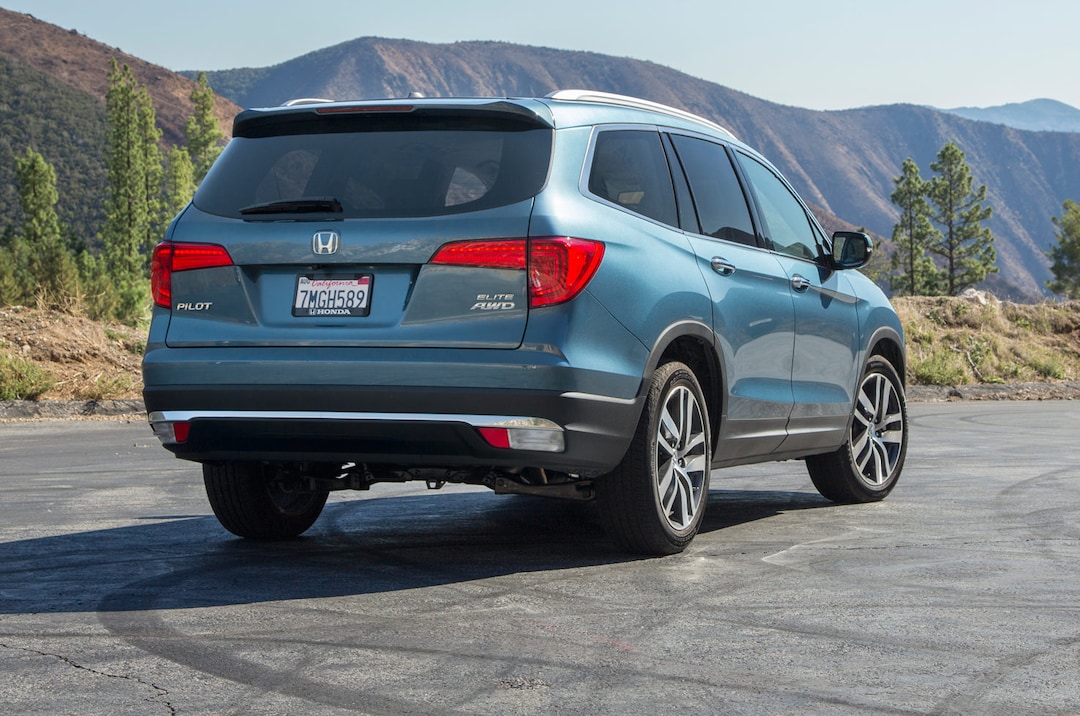
2. 2016 Honda Pilot
The 2016 Honda Pilot was highly anticipated at its release, as it marked the beginning of a new generation for Honda’s popular midsize SUV. With its sleek redesign, third-row seating, and more advanced safety features, it aimed to compete directly with vehicles like the Toyota Highlander and Ford Explorer.
However, despite its outward appeal, the 2016 Pilot quickly earned a reputation for being one of the most problematic vehicles in Honda’s modern lineup. It was plagued by a laundry list of issues right out of the gate, many of which centered around the vehicle’s electrical and mechanical systems. Recalls for the hood latch, engine connecting rod bearings, and fuel pump defects were only the beginning of the story.
Perhaps most frustrating for owners were the electrical glitches. Warning lights would appear erratically on the dash, infotainment systems would freeze or reboot mid-drive, and safety tech like lane assist or forward collision alerts would activate unnecessarily.
These malfunctions not only created a stressful driving experience, but they also posed real safety concerns, particularly when the systems malfunctioned during inclement weather or high-speed travel. Additionally, the nine-speed automatic transmission in upper trims received heavy criticism for its clunky behavior, such as abrupt shifting, delayed engagement, and gear-hunting.
While Honda eventually issued software updates and technical service bulletins, many drivers still report inconsistent performance.
The 2016 Pilot’s problems serve as a reminder that even a well-established nameplate can suffer growing pains in a new generation. It’s an SUV that looked great on paper but was marred by overcomplicated technology and quality control lapses during production. For buyers seeking a reliable used SUV, it’s wise to skip this model year and either opt for a newer, post-refresh Pilot or consider competitors that didn’t have such a rocky start.

3. 2001 Honda Civic
The 2001 Honda Civic is one of the rare examples in which a Civic generation missed the mark so badly that it continues to be used as a warning to buyers even two decades later. While Civics are usually synonymous with dependability, the early 2000s brought in a cost-cutting era for Honda that unfortunately led to serious long-term consequences.
Chief among them was a widespread and well-documented transmission failure issue. Owners reported transmission slipping, shuddering, and outright failure—often before reaching 100,000 miles. This became such a pervasive issue that it spurred lawsuits and forced Honda to offer extended warranties, although that support has long expired by now for used buyers.
The problems didn’t end with the transmission. This Civic generation was also part of the Takata airbag recall, placing it among vehicles with significant safety risks.
Beyond that, the powertrain exhibited numerous other reliability concerns: engine mounts deteriorated quickly, timing belts were prone to premature wear, and various sensors routinely failed, triggering check engine lights that could be difficult and costly to resolve. Electrical gremlins were not uncommon either, particularly in power window motors and interior lighting systems.
While the car’s simplicity and affordability may still attract first-time buyers or commuters looking for a cheap daily driver, the 2001 Civic comes with too much mechanical baggage. The cost of keeping one roadworthy, especially if major repairs haven’t been done recently, often exceeds its remaining value.
In a market where Civics from the mid-2000s and later models offer far more durability, there’s simply no good reason to roll the dice on a 2001 model anymore.

4. 2008 Honda Accord
The 2008 Honda Accord launched to much fanfare as the beginning of the eighth generation, but unfortunately, it ended up being one of the more problematic iterations of the otherwise well-respected midsize sedan. Early complaints primarily centered around premature brake wear—some owners needed to replace pads and rotors as frequently as every 15,000 miles.
Honda issued a class-action settlement to address this, but it was only one of several mechanical and design-related issues to plague this model year. Excessive oil consumption became a bigger concern as mileage accumulated, particularly with the four-cylinder engines. In many cases, owners reported burning a quart of oil every 1,000 miles or less—an alarming rate that often went unacknowledged by dealership technicians until engine damage had already occurred.
Airbag issues also affected this model due to the broader Takata recall, compounding owner frustrations and adding to repair timelines. The interior, although well-designed and spacious, was prone to premature wear on materials like leather seats and dashboard plastics, especially in vehicles left exposed to the sun.
More frustrating for owners was the engine vibration at idle, particularly on automatic models, which created a sense of cheapness in a car that otherwise had premium aspirations. Transmission complaints—especially in V6 models—further tarnished the reputation of this Accord year.
Even today, used car lots across the country are filled with 2008 Accords due to their initial popularity, but prospective buyers should approach with caution. The high likelihood of inheriting brake, engine, and vibration issues, along with general wear and tear, makes it a less-than-ideal investment. In contrast, later models—particularly post-2011 Accords—offer much better performance and reliability for similar price points.
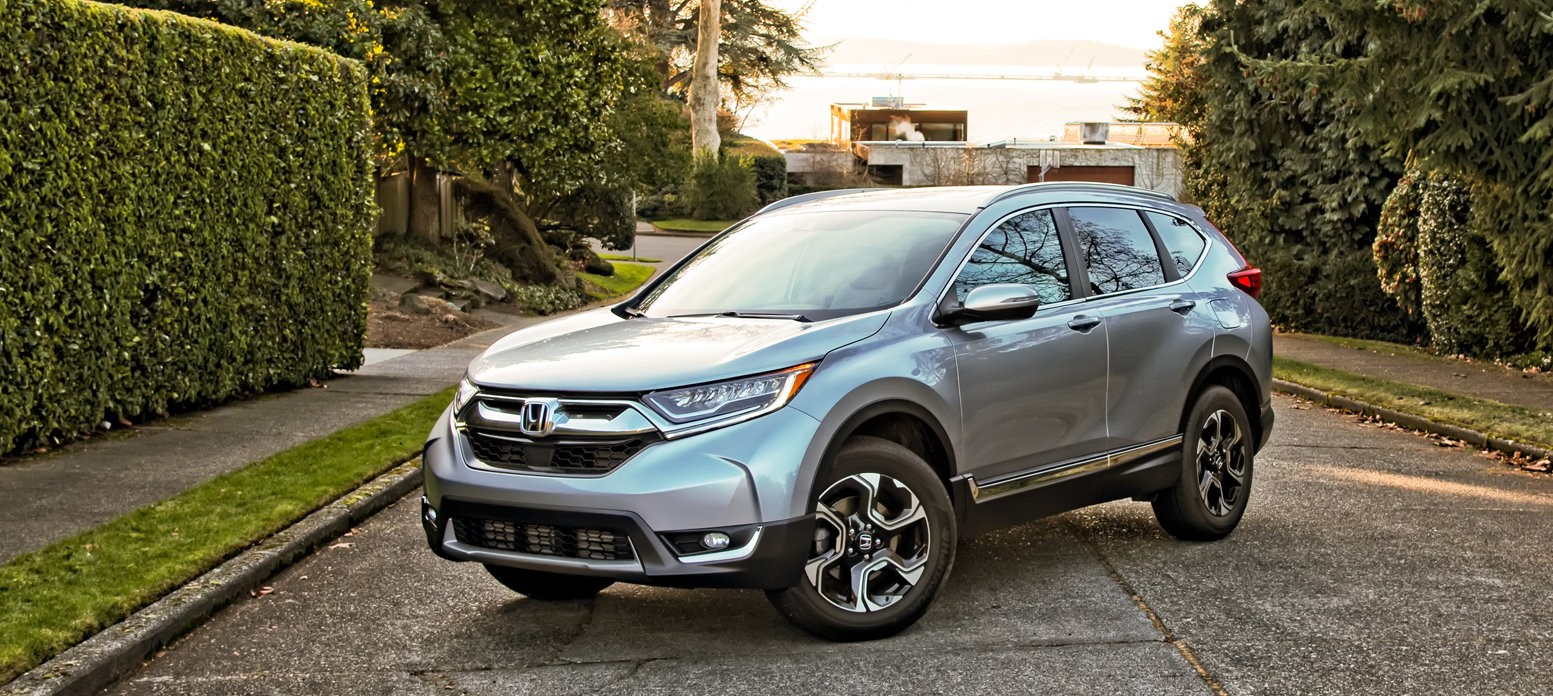
5. 2017 Honda CR-V
The 2017 Honda CR-V was supposed to usher in a bold new era for the popular crossover, and in many ways it did—introducing a sleek design, upgraded infotainment, and a new 1.5-liter turbocharged engine. However, the new powertrain quickly became a major point of concern.
Owners began reporting a troubling issue: fuel mixing with oil in the engine crankcase, a problem now commonly referred to as the “oil dilution” issue. This not only affected performance and fuel economy but also raised questions about long-term engine health. In cold climates, especially, the problem was exacerbated, leading to engine hesitation, stalling, and in some cases, long-term wear that required major repair.
To make matters worse, the forward collision warning system and adaptive cruise control—hallmarks of Honda’s “Sensing” safety suite—began acting erratically in many vehicles. Some owners experienced sudden braking on open roads or had the system deactivate altogether without warning.
Infotainment problems, ranging from touchscreen glitches to Bluetooth disconnection issues, added to the frustration. These may sound minor, but when experienced repeatedly, they chip away at the confidence drivers place in their vehicles.
Though Honda addressed some of these concerns in later model years with software updates and slight engine tweaks, the 2017 CR-V remains the most complained-about version of the vehicle in recent memory.
While its styling and interior quality were praised at launch, the long-term ownership experience tells a different story. If you’re eyeing a CR-V for its reputation—and it does have a good one overall—you’re much better off opting for a post-2019 model or a well-maintained 2015 than taking a risk on the problematic 2017 version.
Also Read: 5 Cars That Dealers Can’t Keep In Stock and 5 That Collect Dust
Honda’s reputation for reliability didn’t materialize overnight. It was earned over decades of thoughtful engineering, smart design, and a relentless commitment to quality. And while the brand still holds strong today, as we’ve explored, it’s not immune to occasional missteps.
As car buyers become more educated and value-conscious in a changing economy, the nuances between specific model years and trims matter more than ever. A used Honda can still be one of the most sensible, cost-effective purchases you make—but only if you choose the right one.
The models we highlighted as still worth buying used—like the 2012–2015 Civic, the 2013–2017 Accord, or the practical 2012–2015 CR-V—continue to deliver the kind of long-term satisfaction that the brand is known for. These vehicles are time-tested and have earned their stripes in the real world.
Whether it’s reliability over 200,000 miles, minimal maintenance requirements, or strong resale value, these Hondas remain go-to options for savvy used car buyers. They demonstrate that even as vehicles age, quality engineering and thoughtful design shine through.
However, the other half of the story—the Hondas that aren’t reliable anymore—serves as a crucial reminder that brand loyalty shouldn’t replace due diligence. Vehicles like the 2008 CR-V, the 2016 Pilot, and the 2001 Civic may have once carried Honda’s trusted nameplate, but over time, they revealed flaws that eroded consumer confidence. Issues like transmission failure, excessive oil consumption, and dangerous airbag recalls aren’t just minor inconveniences—they’re serious ownership concerns that can cost thousands in repairs and undermine the core reason most people buy Hondas in the first place: peace of mind.
It’s also important to recognize that some of Honda’s reliability issues stemmed from growing pains. As the brand attempted to innovate, incorporating turbocharged engines, advanced driver-assistance systems, and more complex infotainment, they sometimes released products that weren’t fully ready.
The 2017 CR-V and 2016 Pilot illustrate how modern technology can sometimes backfire if not properly tested, reminding buyers that newer doesn’t always mean better. These lessons emphasize the importance of model-specific research, not just assuming that “all Hondas are reliable.”
The takeaway? When buying used, especially from a once-unquestioned brand like Honda, do your homework. Look at reliability data, read owner forums, and check service histories. Avoid the temptation of a low sticker price on a known problem model, and instead, prioritize a solid ownership track record. The difference between a great used Honda and a problematic one often comes down to the details.
Honda is still, by and large, a trusted name in the auto industry. But trust, in this case, must be earned by each model, not assumed. If you’re buying used in 2025, let this guide serve as both a roadmap and a caution sign. Choose wisely, and your next Honda could easily take you another 100,000 miles and beyond.

